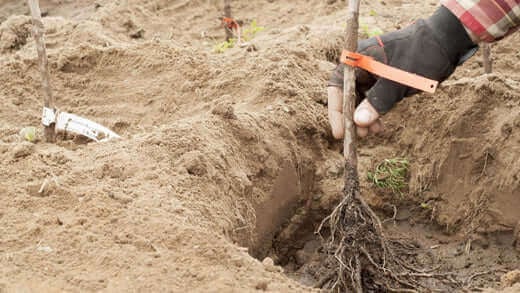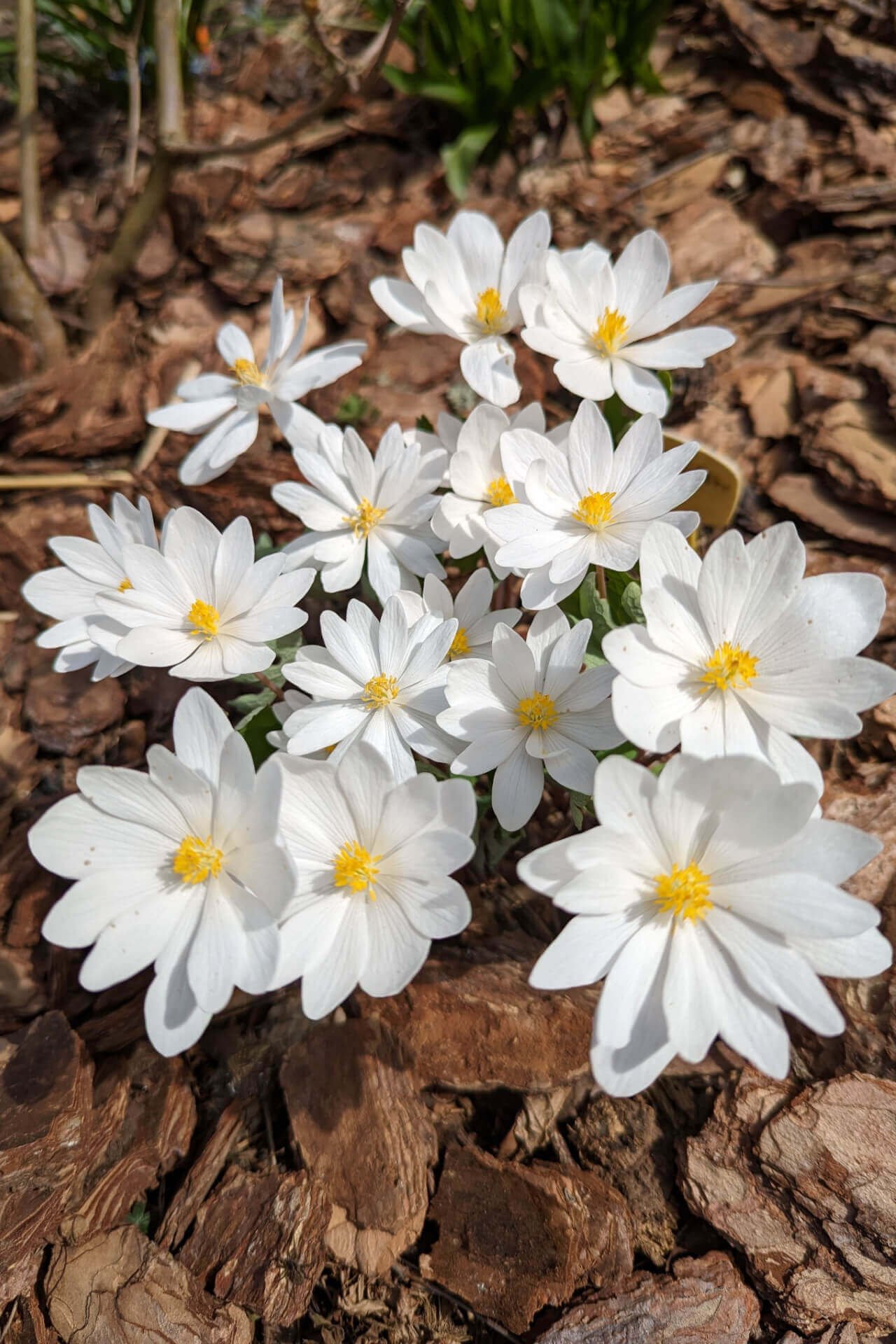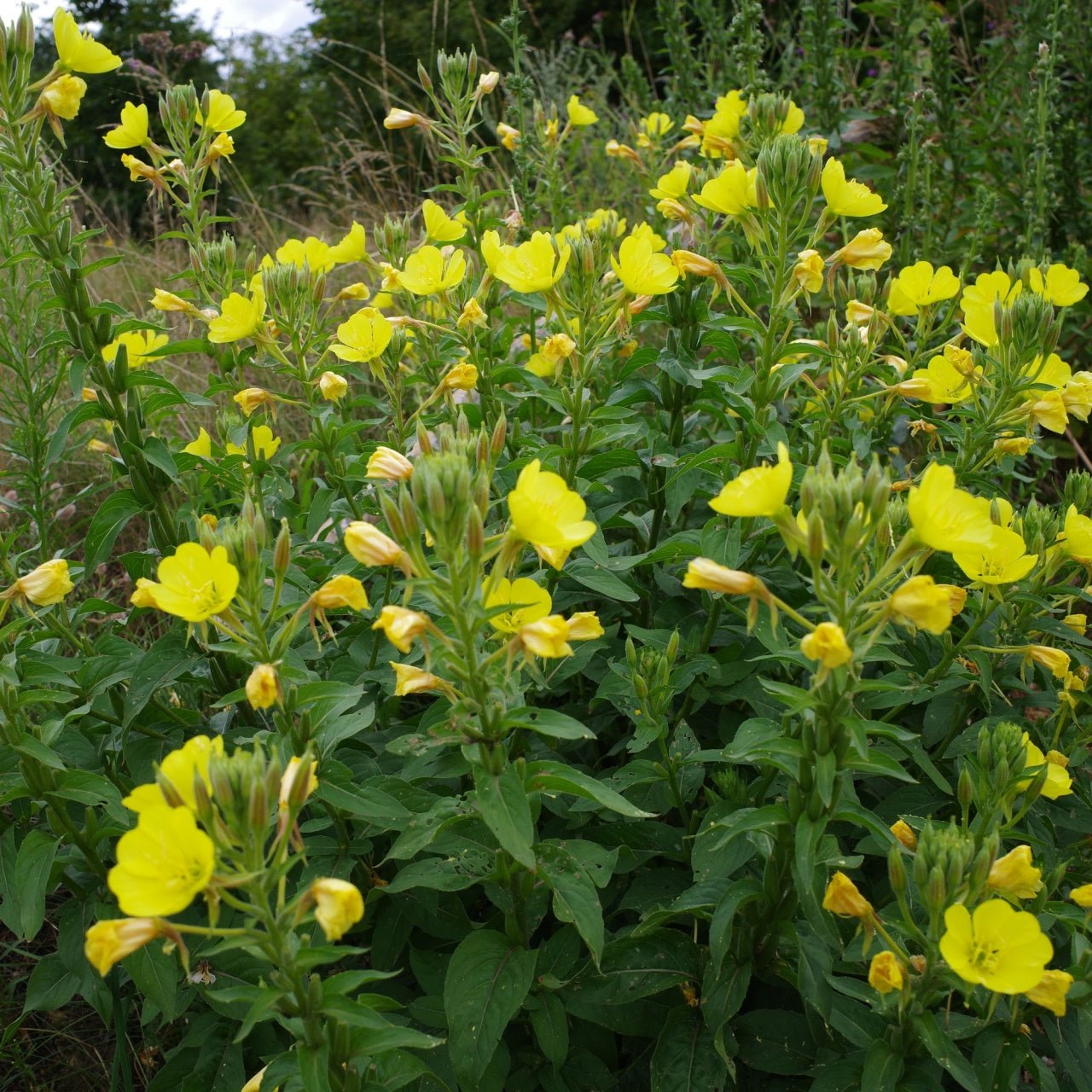Bare Root Plants: Basics and Care
Gardening enthusiasts and professionals alike often deal with various types of plants, each with unique characteristics and requirements. The bare root plant is one type that often captures attention due to its economical and convenient nature. These plants offer several advantages but demand specific care to ensure their successful growth and establishment. This guide will delve into the elementary of bare root plants, including their definition, benefits, and comprehensive care guidelines. Our best-selling plants are bloodroot and primrose.
Understanding Bare Root Plants:
Bare root plants are exactly what their name suggests: sold and transplanted without soil around their roots. Unlike potted plants, which have a soil ball around their hearts, bare-root plants are usually dormant, meaning they are not actively growing when lifted from the ground. Depending on the plant type and climate, these plants are commonly available during the dormant season, typically in the fall or early spring.
Benefits of Bare Root Plants:
Cost-Effectiveness: One of the primary advantages of bare root plants is their cost-effectiveness. Since they are sold without pots or soil, they are often less expensive than their potted counterparts. This makes them attractive for gardeners looking to populate a large area or create a new garden bed without breaking the bank. More accessible Transportation: Bare root plants are much lighter and more easily transported than potted plants. This aspect is especially beneficial for online orders, as it reduces shipping costs and the likelihood of root damage during transit.
Faster Establishment:
Bare root plants have the potential to establish themselves more quickly compared to potted plants. When transplanted, their roots can immediately start growing outward without needing to overcome any barriers the potting soil poses. Less Transplant Shock: Potted plants often experience transplant shock as their roots struggle to adapt to new soil conditions. Bare root plants, conversely, can be transplanted with minimal disruption to their root system, reducing the risk of shock and promoting healthier growth.
Care Guidelines for Bare Root Plants: While bare root plants offer numerous benefits, they require specific care to ensure their successful establishment and long-term growth. Here's a comprehensive guide on how to care for bare-root plants:
- Timing: Bare root plants should be planted during their dormant season, typically in the fall or early spring. This is when the plants are least likely to experience stress from transplanting.
- Inspection: Before planting, carefully inspect the bare root plant. Trim any damaged or broken roots, and prune any excessively long roots. This will encourage the plant to spotlight its energy on growing healthy roots.
- Preparation: Choose a planting site that suits the plant's specific needs regarding sunlight, soil type, and drainage. Make the soil by loosening it and incorporating organic matter if necessary.
- Hydration: Soak the bare roots in water for several hours before planting. This rehydrates the meats and prepares them for the planting process.
- Planting Depth: Make a hole in the prepared soil that is deep enough to adjust the roots without bending or crowding them. The plant's crown (where the hearts meet the stems) should align with the soil surface.
- Positioning: Spread the roots in the planting hole, ensuring they are not twisted or bunched together. Gently backfill the hole with soil, providing the sources are in direct contact with the ground to promote proper root growth.
- Watering: After planting, water the bare root plant thoroughly. Provide enough water to settle the soil and eliminate air pockets around the roots. Maintain consistent moisture, but avoid waterlogging, as excess water can lead to root rot.
- Mulching: Apply a layer of organic humus, such as straw or wood chips, around the planted bare root. Humus helps retain soil moisture, suppress weeds, and regulate soil temperature.
- Staking: If the bare root plant is tall or top-heavy, consider staking it to prevent wind damage during its early growth stages.
- Pruning: While bare root plants are dormant, it's an excellent time to perform any necessary pruning. Remove dead or diseased branches, and shape the plant as needed to encourage a strong structure.
- Fertilization: Avoid heavy fertilization during the first growing season. Use a balanced, slow-release fertilizer sparingly to provide essential nutrients without overwhelming the young plant.
- Protection: If planting in an area with potential frost or freeze events, consider using frost cloth or other protective measures to shield the plant until it becomes more established.
- Regular Monitoring: Keep a close eye on your newly planted bare-root plant. Monitor its growth, water needs, and overall health. Address any issues promptly to ensure optimal development.
Bare root plants offer an economical and practical way to expand your garden or landscape. Understanding their unique characteristics and following the proper care guidelines is crucial for ensuring their successful establishment and long-term growth. By choosing the appropriate planting time, providing adequate hydration, following correct planting procedures, and maintaining diligent care, you can reap the benefits of healthy, thriving bare-root plants that enhance the beauty of your outdoor space. Whether you're a seasoned gardener or a beginner, mastering the basics of caring for bare-root plants opens up a world of possibilities for creating vibrant, flourishing gardens.
How Bare Root Plants Offer Significant Benefits for Planting
Planting bare root stock is one of the most efficient and economical methods for establishing healthy and thriving gardens or landscapes. Bare root plants are delivered and planted with their roots exposed because they lack surrounding soil. The root systems of these plants receive a protective wrapping of moisture-retaining materials that keep them from drying out during their transport period and before they get planted. Beginner gardeners and experienced horticulturists will find multiple attractive benefits when using bare-root plants for upcoming projects.
The most crucial benefit of bare root stock planting is the higher likelihood of successful transplantation. Containerized plants may develop root-bound conditions when their roots circle within the pot, leading to impaired water and nutrient absorption after ground planting. Bare root plants recover faster from transplant shock because a container for their root systems has not restricted them. The roots of bare-root plants can expand freely after transplantation as they search for fresh sources of nutrients and moisture within the surrounding soil.
The cost of bare root plants is usually lower than that of pots. Shipping container-grown plants incur higher costs for nurseries and retailers because soil adds weight and volume to shipments. The consumer typically experiences increased costs due to these higher shipping and handling expenses. Nurseries ship significantly more bare root plants in the same space, which lowers transportation and storage costs. The purchase price for consumers decreases, which enables gardeners to expand their plant collection or purchase more plants for substantial landscaping projects.
Bare root plants provide the advantage of an extended window for planting. The specific timing for transplanting bare root stock depends on local climate conditions. Still, it can usually be planted during the dormant period before early spring growth starts or following leaf drop in late fall. When plants are planted during their dormant phase, they experience less stress, which enables them to focus on developing roots in their new location. Breaking dormancy allows the plant to grow more substantial capabilities for producing healthy leaves and abundant flowers and fruits.
Handling bare-root plants is more straightforward for gardeners. With bare-root plants, gardeners avoid the burden of heavy containers and messy soil media. By reducing the chance of bringing pests or pathogens from container soil into your garden, you can keep your garden environment healthier overall. Lightweight bare root plants simplify transportation to remote areas, whether gardeners carry them by hand or use vehicles.
Gardeners benefit from bare-root plants because they display a clear and structured root system that reveals the plant’s health before planting. Inspecting roots before planting enables gardeners to remove damaged or diseased parts to enhance planting success.
In summary, bare root plants offer a wide array of advantages: Bare root plants produce less transplant shock while saving money, offer planting flexibility, and enhance root health with easier handling. Gardeners who learn about bare root benefits and choose a top-notch stock from trusted nurseries will create sustainable landscapes that develop into flourishing gardens that endure over time.
Read more

Planting perennials in your garden make a lot of difference in the landscape, as they can enhance the beauty of your garden for at least 2-3 years. Perennial plants are in bloom generally during th...

Autumn is when you need to take care of the lawn and prepare it for the coming season. It is crucial to plan and prepare your lawn for the winter season. If you take the necessary steps during this...




